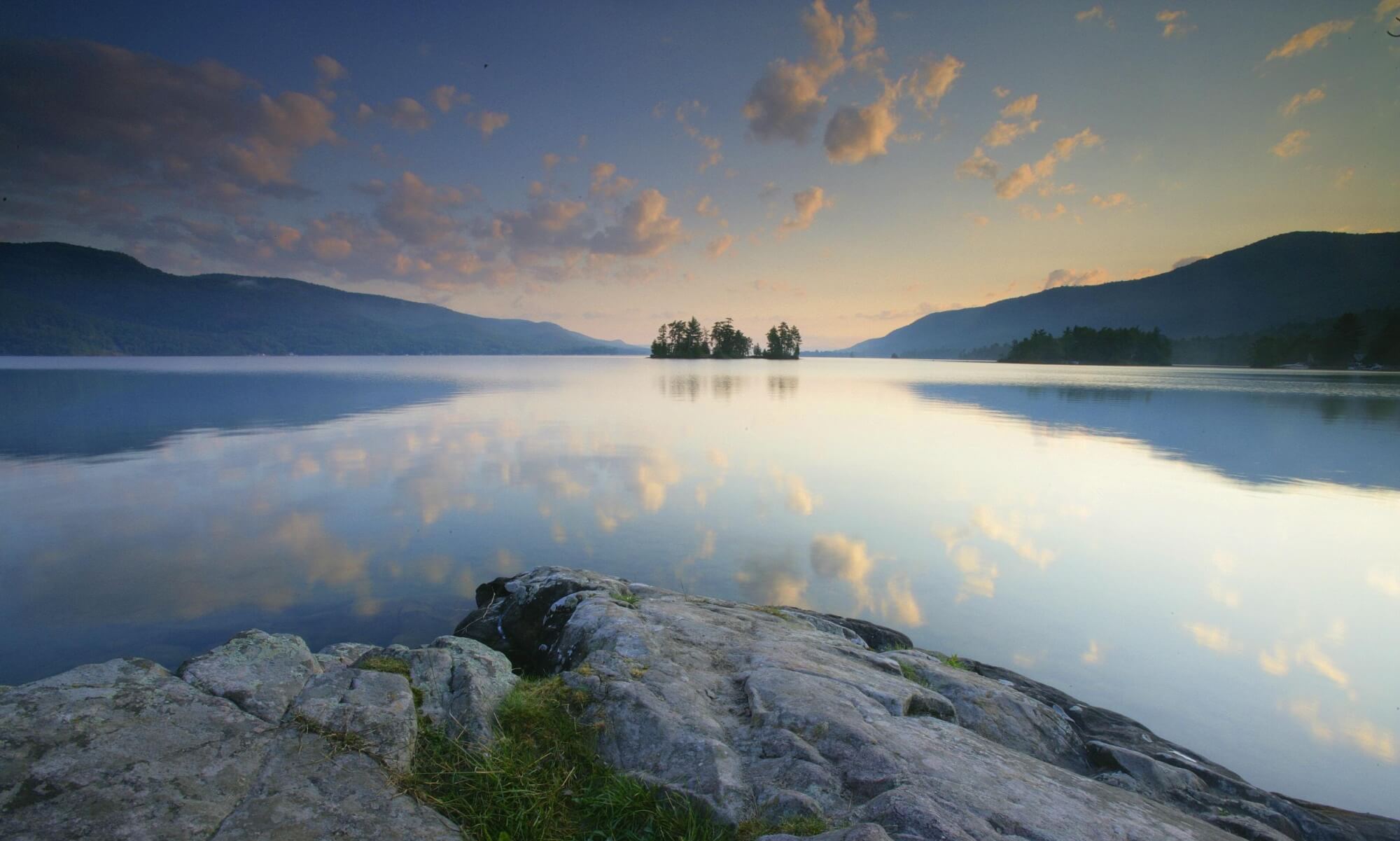
Now for Some History: 1873
Coming Rain on Lake George
Sanford Robinson Gifford
1873
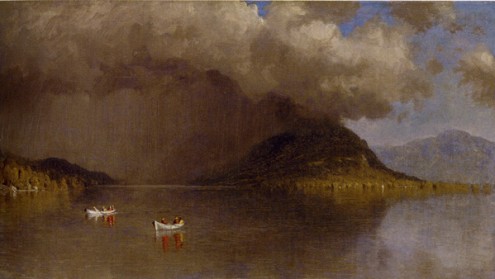
Rosenthal Joins LGA Staff
 The Lake George Association, a not-for-profit membership organization that protects Lake George, announced today that Lynne M. Rosenthal has joined the organization as Communications Coordinator. She will be responsible for print and electronic publications, media and government relations, and the organization’s website. Previously she served as the Assistant Director for the World Awareness Children’s Museum of Glens Falls, and as an Educational Program Manager for the WSWHE BOCES in Saratoga Springs. She holds a B.S. degree in marketing management from Virginia Tech in Blacksburg, Virginia.
The Lake George Association, a not-for-profit membership organization that protects Lake George, announced today that Lynne M. Rosenthal has joined the organization as Communications Coordinator. She will be responsible for print and electronic publications, media and government relations, and the organization’s website. Previously she served as the Assistant Director for the World Awareness Children’s Museum of Glens Falls, and as an Educational Program Manager for the WSWHE BOCES in Saratoga Springs. She holds a B.S. degree in marketing management from Virginia Tech in Blacksburg, Virginia.
“Lynne has joined us during our 125th anniversary year, and we couldn’t be more delighted,” said Walt Lender, Executive Director of the Lake George Association. “Lynne not only brings a strong background in communications and marketing to the LGA, but also a wealth of experience working for not-for-profit educational organizations. The LGA is proud of its leadership role in education, from the lake friendly outreach work we do for people planning projects on the lake, to our Floating Classroom and in-school programs. Lynne will play an instrumental role in all of our efforts.”
Ms. Rosenthal has lived in Lake George since 1999 with her husband and two sons. She is a flutist and vocalist with the Lake George Community Band and enjoys swimming, kayaking and camping on the lake in the summer, and hiking and cross-country skiing in the mountains surrounding the lake during other times of the year. “Just as the founders of the LGA said when they established the organization 125 years ago, I want to give something back to a lake which has given so much to me,” said Ms. Rosenthal. “I was amazed to learn the LGA is the oldest lake association in the United States. I am also impressed by the scope and number of projects the LGA has completed over the past year. While the amount of the work the LGA produces certainly will make my job challenging, the fact that so many of the organization’s projects produce concrete results, makes the job easier. I am eager to get the word out about the LGA’s many educational programs and lake saving projects.”
Septic Training Course Offered

The Lake George Association (LGA), in conjunction with the Champlain Watershed Improvement Coalition of New York (CWICNY), is sponsoring a septic system training course on March 25, 2010 at the Fort William Henry in Lake George.
The one-day course, titled “Small Scale Wastewater System Design II – Alternative Systems” is designed for professionals in the wastewater field, including engineers, designers, health officials, inspectors and planners.
“We wanted to offer our local professionals an opportunity to receive some high quality training close to home” said Beth Gilles of CWICNY. Participants at the training can earn 7.5 PE or CEO credits, and will gain an understanding of wastewater regulations and guidance, site appraisal and evaluation, and treatment system design elements. The course will provide guidelines for making soil evaluations, site design examples and alternative onsite technologies. The course is being offered as part of the New York Onsite Wastewater Treatment Training Network (OTN) and will be taught by a certified OTN instructor.
“We felt it was very important to encourage as many people as possible to gain up-to-date knowledge and skills in this area since good wastewater design is essential to protecting water quality. Alternative systems are a great way to effectively manage wastewater on sites around Lake George that have tough physical constraints such as small lot sizes or shallow bedrock,” said Emily DeBolt, LGA’s Director of Education.
Cost including meals and printed materials is $40 for municipal employees and $80 for private industry employees; Pre-registration is required and space is limited. For more information or to register, contact Emily DeBolt at the Lake George Association at 518-668-3558 or Beth Gilles at the LCLGRPB at 518-668-5773.
America’s Last Frontier
If you have 52 minutes, this is one of the best documentaries I have seen in awhile.
In 1980, the Arctic National Wildlife Refuge was established in the Alaskan Interior, cutting off 19 million acres of prime boreal wilderness from the mitts of fur trappers, oil tycoons, and would-be lodge owners alike. Only six families of white settlers were grandfathered in and allowed to keep cabins in the refuge—of them, only one still stays there year-round living off the land. His name is Heimo Korth, and he is basically the Omega Man of America’s Final Frontier.
A Winter Scene

GUY COHELEACH
Black River Snow
oil on canvas
Innovative Transport of Power Through Whitehall & Canal Proposed
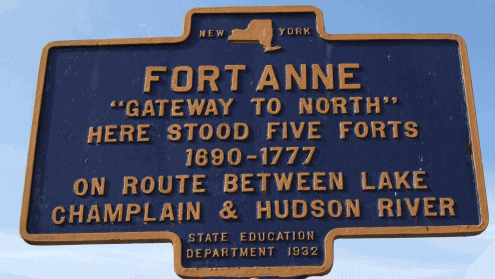
A major supplier of electricity to the Northeast is proposing to go down Lake Champlain, through the Champlain Canal in Whitehall, and back into the Hudson River to bring power to New York City and Long Island. This would be a new way to supply the growing power needs of our country without disrupting scenery.
It has been reported on North Country Public radio about a proposed power supply route that would use the historic route between Canada and New York which passes through Whitehall.
What is truly innovative, as I understand it, is that there would be no overhead lines, no cutting of trees and the power would come from renewable sources.
Here is a video that describes the concept.
httpv://www.youtube.com/watch?v=75d6-SHFE08
I’m sure we’ll hear more about this in the months ahead.
Bits of Everything
Vermont Neighbor Wins Olympic Gold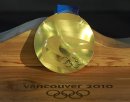
Hannah Kearney from nearby Norwich, Vermont won the gold medal in the women’s moguls at the Vancouver 2010 Olympics!
Historic Lake George Photos Donated to Bolton Library
The Adirondack Almanack has a story which should interest all history lovers.
Beautiful Bird Pictures
This site: http://birdbook.org/ has some stunning photography of different birds.
You will need to:
Click on the Copyright OK
Then select “Photographs”
Then select “Index” to see all birds
When you select a type of bird there are numerous pictures of each type.
Bits of Everything
Famous Jefferson Lake George Quote Put in Context
The Adirondack Almanack gives us great background information on Thomas Jefferson’s visit to Lake George which produced his memorable quote.
Effort to Save Bats Begins in Whitehall
I definitely noticed that the bat population in Huletts was down last summer, so this is some potentially good news that the Post Star reports.
The Immune System in Action
This is a bit dated but behold, a human polymorphonuclear leukocyte (PMN, or neutrophil) on a blood film, “chasing” Staphylococcus aureus. This is how your body fights back when you get sick. For real. (Requires Quicktime.)
Drip Drip
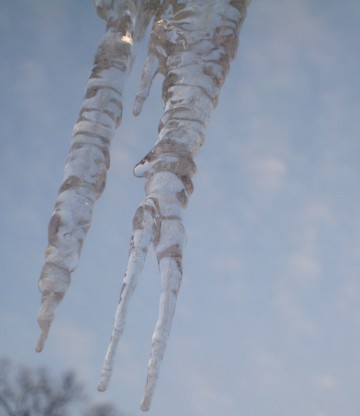
There’s No Place Like Home
This is a beautiful video that zooms out from Tibet to the limits of the observable known universe.
httpv://www.youtube.com/watch?v=17jymDn0W6U&
It ‘s astronomically accurate. It’s not a dramatization, it’s a map; the positioning data was pulled from Hayden Planetarium’s Digital Universe Atlas.
The Wind & The Current
 Over the last month, I’ve noticed some performance issues with the website so I’ve decided to move it to a new hosting company. This will mean some “growing pains” but by the end of February the Huletts Current will be migrated to a new server and you’ll see some additional improvements.
Over the last month, I’ve noticed some performance issues with the website so I’ve decided to move it to a new hosting company. This will mean some “growing pains” but by the end of February the Huletts Current will be migrated to a new server and you’ll see some additional improvements.
In researching where I would move the site to, I noticed several innovative companies that offered “Green Web Hosting”. Does this mean the server is painted green? No. What it does mean is that after we move, we will be a green-certified web site, where our data center and server will all be powered by 100% wind energy.
The company we are migrating to will offset all of their electricity use with wind-generated Renewable Energy Certificates, which prevent the release of 2,660 metric tons of carbon dioxide from entering the atmosphere each year. I know, while breathing the clean Adirondack air, that is something we all care about.
To put this in perspective, the estimated yearly benefit to the environment is equivalent to either one of the following:
1.) Planting approximately 2,390 acres of trees or
2.) Not driving 6.1 million miles
One of the misnomers that the environmental movement perpetuates is that it is only through regulation and the taking of property rights that the environment can be protected. They forget the power of innovation and the fact that people’s actions can change without regulation. We can choose to walk more, drive less and recycle all on our own.
So shortly without any cost to you, when you read the Huletts Current, feel the wind bristling through the air and know you’re helping the environment. We’ll keep you updated as we move.
LGA Study: Fireworks Don’t Harm Environment

The Lake George Association has recently completed a study, which I have posted in its entirety here, which concludes that fireworks do not harm the environment but more study is needed.
This is something that I’ve always wondered about. I’ve excerpted certain paragraphs below but I recommend you read the entire report. It’s quite interesting.
In more recent years, with increasing interest in new age contaminants, there have been a few studies on perchlorate, which is used as a propellant in fireworks. While most of it combusts, all
of it does not, resulting in perchlorate falling down on the land and water. There are health and environmental concerns associated with perchlorate contamination, many of which are still not well understood. Perchlorate is absorbed by the thyroid gland in place of iodine, which can interfere with the production of thyroid hormone, which is essential to metabolism and mental development.Antimony (Sb) and Barium (Ba) are two common chemical components of fireworks. Antimony is a metal used to create firework glitter effects. Barium is used to create green colors in fireworks. It is also used to stabilize other volatile elements of the fireworks. At increased concentrations, antimony has been shown to cause heart problems and stomach ulcers in humans. In small mammals, antimony has been shown to cause lung, heart, liver and kidney damage and eventually death. Water soluble forms of barium have been linked to increased blood pressure, kidney and heart damage, and breathing difficulties in humans. Barium also bioaccumulates in fish and other aquatic organisms.
Due to concern over the years about the effects of fireworks on Lake George, and lack of available scientific data, we collected some initial samples this past summer. Perchlorate, barium, and antimony, all common components of fireworks, were measured in the water. Perchlorate was also measured in sediment samples. Our samples did not find higher amounts of these pollutants in response to fireworks events held in Lake George Village throughout the summer. Our results showed no change in perchlorate, with perchlorate levels less then 0.002mg/L for all tests, before and after firework events. We also did not find a change in antimony levels, and while barium levels slightly fluctuated, the results were also not significant. We also found perchlorate levels of less than 0.002 mg/L in the sediment samples from both locations, both near the fireworks and far away from any known fireworks displays.
However, we acknowledge that these results are only very preliminary. Other studies elsewhere have found changes in perchlorate levels associated with fireworks. These studies were able to measure smaller amounts of perchlorate thanwe were able to in this study. There are also many other contaminants associated with fireworks that we did notmeasure. Others may wish to pursue further studies on this matter, and our findings are available for those purposes.
Perchlorate-free fireworks are available for use, however they cost more than traditionalfireworks. Since perchlorate has implications for human health, a switch to perchlorate-free fireworks for fireworks used over Lake George might want to be considered. Our initial findings did not find detectable perchlorate levels in the water attributable to fireworks, so they do not necessarily support the need of this additional expense at this time. However, since this study was by no means comprehensive, we can not know for certain if there is need for a concern over perchlorate or not, and can only weigh our options based on the knowledge we have available to us. This study is just one step in adding to that knowledge base. It still might be a prudent idea to further investigate the costs associated with using perchlorate-free fireworks.
What does seem to make sense to move forward with at this time is a way to track the fireworks displays that occur over Lake George every year, so that we can have a better idea of the number and locations of these events. A simple registration form could be required by licensed fireworks display companies hired to produce a show anywhere in the Lake George watershed. The name of the company, date, time, location, and information on the amount and type of materials used in the show would be very useful information to have. This does not have to be a burden or expense on the fireworks companies, just a simple registration form so that we know what is going off in the air over the lake, and potentially falling into it. When we met with Jeff Alonzo from Alonzo fireworks he agreed that such a registration seemed reasonable
and said he had no objection to it. The LGA is in no way against fireworks displays over Lake George. We know that everyone enjoys a good fireworks show. However, if future scientific inquiries determine that there is cause for concern, as stewards of Lake George, we feel that the responsible thing to do is to address the matter and work with our local community in finding a solution.
I’ve read that back in the early 1900’s there were fireworks in Huletts every week during the summer.
Bits of Everything
Can You Say Cold?
I grabbed this screen shot of the temperature this morning to have proof.

Residents Lash Out at APA Boathouse Proposal
Even the local press is now beginning to recognize the extreme anti-people agenda at the Adirondack Park Agency. This Post Star article shows how the proposed APA boathouse regulations have nothing to do with the environment. They are only being proposed to stop people from enjoying the waterfront. Lake George Park Commission Chairman Bruce Young even spoke out against them.
The comments came not only from residents who live and work in the Adirondack Park, but from officials such as Town Supervisor Frank McCoy, town Planning Board member John Carr, former Bolton Supervisor Alexander “Zandy” Gabriels and even Bruce Young, the chairman of the Lake George Park Commission.
“It’s a terrible burden on the property owners. We shouldn’t have to put up with this,” Young said.
Read the whole thing here. When the Fund for Lake George even admits; “We don’t see a water quality benefit,” you know there’s a problem.
